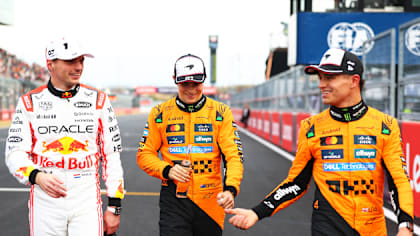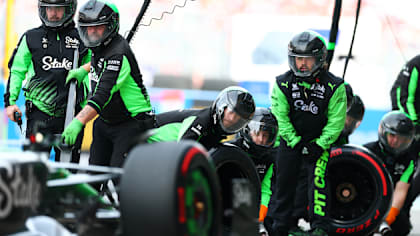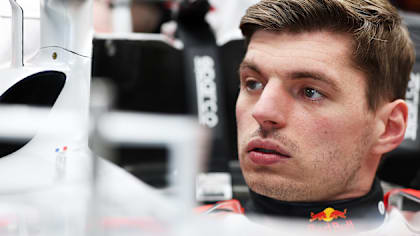Technical
TECH INSIGHT: Have Mercedes just changed the game with new steering wheel system?

Share
F1 fans’ eyes were drawn to onboards of Lewis Hamilton’s Mercedes W11 on Day 2 of 2020 pre-season testing at Barcelona, as footage appeared to show him moving his steering wheel in the car to effect a change in the W11’s attitude. Mark Hughes analyses what’s going on inside the new Silver Arrows machine…
Mercedes created a stir on the second day of testing as an on-board camera showed Lewis Hamilton pushing and pulling on the steering column (as shown in the video above), using a mechanism that appeared to change the alignment of the front wheels.
ONBOARD: Watch as Lewis Hamilton sets fastest time in Day 1 of pre-season testing
Hamilton would pull the wheel back on the column as he drove down the straight (which had the effect of straightening-out the usual ‘toe-out’ of the wheels) and would then push it back down just before the corner, at which point the wheels would adopt their conventional ‘toe-out’ setting.
Typically an F1 car will be set up so that its front wheels are aligned with ‘toe-out’, which simply means that they splay out at the bottom away from the centre of the car, with the top pointing inwards.
LIVE TIMING – full coverage of Formula 1 Pre-Season Testing 2020
Hamilton & Allison quizzed on Mercedes' new 'Dual Axis Steering' system
The reason they are set in this way is to create a tiny delay in the front tyres loading up as the car is turned in so that the rear tyres do not have too sudden an instantaneous load placed upon them, which would make the car feel unstable on turn in.
However, this means that on the straight the inner edge of the tyre’s tread surface is being heated up more than is the remainder of its width.
READ MORE: New 'DAS' steering wheel system ‘legal’ and ‘safe’, insist Mercedes
If the Mercedes mechanism works as assumed, the tyres will be heated more evenly across their width as they run fully upright, but the benefits of toe-out can still be deployed into the corner. It will be of particular benefit on circuits with long straights.
It appears to be a fully mechanical device, likely using the column movement to activate a lever acting upon the wheel hubs. It will add a whole new dimension to the tools available to the driver in trimming the balance of the car and looking after the tyres.
The full picture of how exactly Mercedes’ system works will doubtless become clearer in the next few days. But one thing is clear: the reigning world champions certainly haven’t been taking their foot off the gas over the winter break…
YOU MIGHT ALSO LIKE
FeatureF1 Unlocked Max vs the McLarens and rain on race day – What To Watch For in the Japanese Grand Prix
FeatureF1 Unlocked STRATEGY GUIDE: What are the tactical options for the Japanese Grand Prix?
News ‘A lot of things are not clicking’ – Red Bull’s Verstappen admits he’s lacking ‘confidence and commitment’ around Suzuka after tricky Friday
News Alpine reveal ‘misjudgement’ that led to heavy Doohan crash in Suzuka FP2 as they assess chances of fixing car for Qualifying




